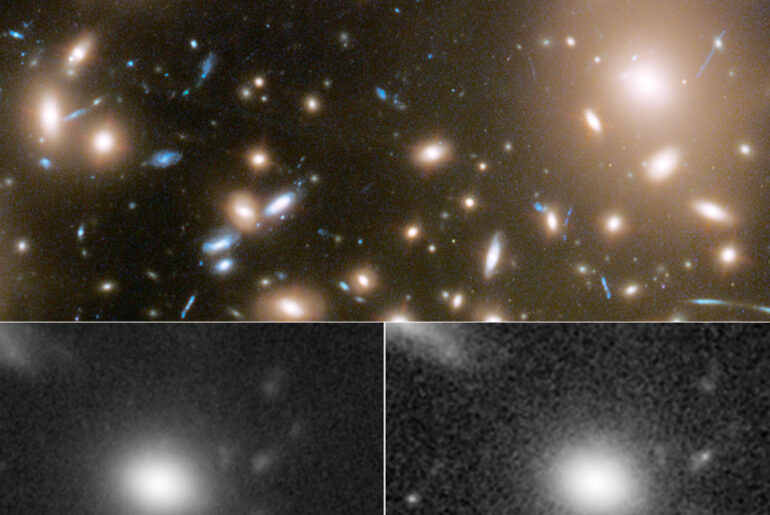
NASA / ESA’s Hubble Space Telescope captured this cosmic keyhole, and then three different moments of a distant supernova explosions that happened more than 11 billion years ago in a single snapshot. What is learned here could help scientists uncover the mysterios of star formation and galaxies in the early universe.
It’s very rare to detect a supernova at a very early stage, as it only lasts for hours to a few days. In other words, it can be easily missed even for a nearby detection. However, in this same exposure, we are able to observe a sequence of the multiple faces of a supernova, thanks to gravitational lensing. The massive gravity of the galaxy cluster Abell 370 acted as a cosmic lens, thus bending and magnifying the light from the more distant supernova located behind the cluster.
- POWERFUL TELESCOPE FOR ASTRONOMY BEGINNERS: The AstroMaster 130EQ delivers sharp optics, a stable equatorial mount, and smooth manual controls, making...
- HIGH-QUALITY 130MM OPTICS: Enjoy views through the 130mm (5”) Newtonian reflector, which features high-quality aluminum and SiO₂ coatings and...
- SMOOTH, ACCURATE POINTING: Effortlessly aim and center your target using the two slow-motion control knobs for right ascension and declination whether...

You see different colors in the three different images. You’ve got the massive star, the core collapses, it produces a shock, it heats up, and then you’re seeing it cool over a week. I think that’s probably one of the most amazing things I’ve ever seen!,” said Patrick Kelly, study leader and an assistant professor in the University of Minnesota’s School of Physics and Astronomy.







